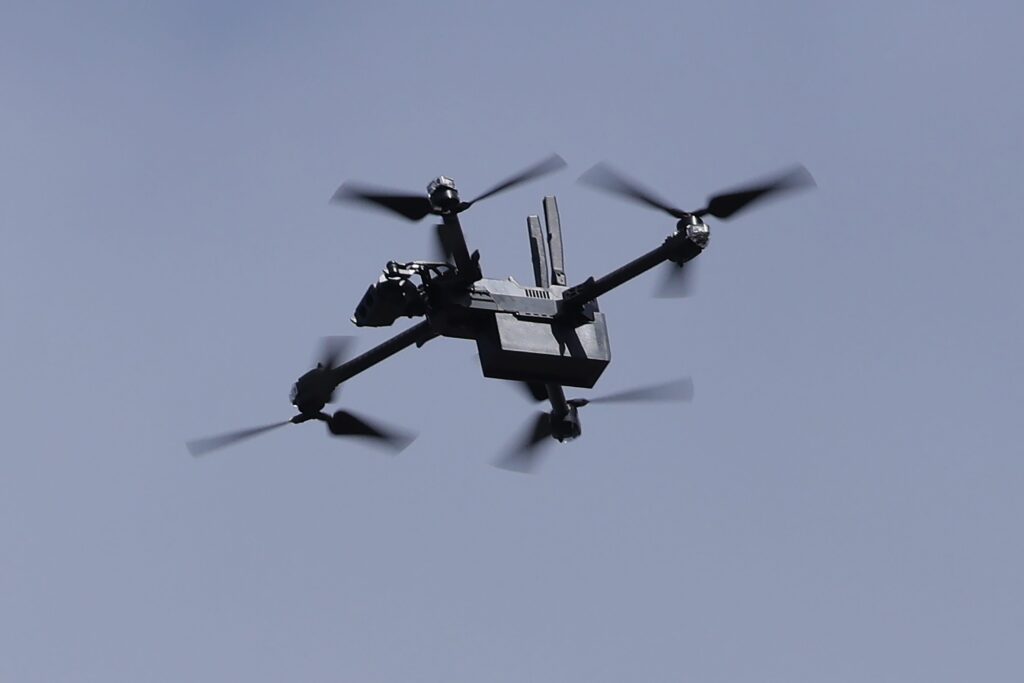- Chinese researchers have unveiled a military drone capable of splitting into six units in midair.
- The multiplying drones could expand into swarms that would confuse air defense systems, experts told Business Insider.
- The drones aren't necessarily a game changer, one analyst said.
Chinese scientists have reportedly developed a military drone capable of rapidly splitting into six separate units in midair.
The drone marks a breakthrough in air separation technology and could change the battlefield, the South China Morning Post reported.
The new devices are faster and more efficient than traditional multirotor drones, and have the ability to throw off opponents by unexpectedly multiplying into huge swarms on the battlefield, according to scientists from the Nanjing University of Aeronautics and Astronautics.
Inspired by the structure of maple seeds, they have just one blade both when combined and divided. They can fly around freely like a standard drone and communicate to carry out complex missions.
Despite their unusual shape, they boast a flight efficiency nearly twice that of a similar-sized multirotor drone, the scientists said in a peer-reviewed paper published in Acta Aeronautica et Astronautica Sinica journal last month.
If traditional drones were combined, they would typically slow down. But even when separated into single units, these drones' flight efficiency remains 40% higher than most small drones.

The scientists said that a soldier equipped with several drones could disassemble them to complete a range of missions, giving China's People's Liberation Army a tactical advantage over its opponents.
"The main benefit is the ability to confuse the response of air defense systems," Will Shumate, an Assistant Policy Researcher of China, technology, and security at RAND, told Business Insider.
"When drones are detected, defense systems deploy a certain amount of resources proportional to the threat. If that threat suddenly multiplies, it provides an opportunity to overwhelm the air defense resources being deployed," Shumate said.
"If the drone was ready to be fielded and a conflict broke out today, it could be a tactical game changer," he added.
However, Shumate believes that's unlikely.
"China's technology development process can be a black box at times, but I would not assume the announcement of this breakthrough means China will be fielding these systems anytime soon."
Their development isn't that significant when you consider the considerable might of China's existing drone capacity, another analyst told BI.
"The key part to consider is that China has over 2000 companies working on drones. It has control of the drone supply chain and can produce things really cheaply," said TP Huang, a computer scientist and China analyst.
"So when we talk about how [these latest drones] might apply to warfighting, it can overwhelm any defense force with just the sheer number of drones that it can produce — much higher end than what you've seen in the Russia/Ukraine conflict."
Small, affordable drones are reshaping the modern battlefield in unprecedented ways, and forcing militaries to rapidly modernize their defense systems.

Earlier in March, the US Army requested $2.4 billion for the development of unmanned aircraft systems (UAS) and more than $400 million for counter-drone tech in its fiscal 2025 budget request.
Meanwhile, Admiral John Aquilino, the leader of the Indo-Pacific Command, warned the House Armed Services Committee on Wednesday that China has increased its overall defense budget by 16% to more than $223 billion.
"On a scale not seen since WWII, the PLA's buildup is occurring across land, sea, air, space, cyber, and information domains," Admiral Aquilino said.
